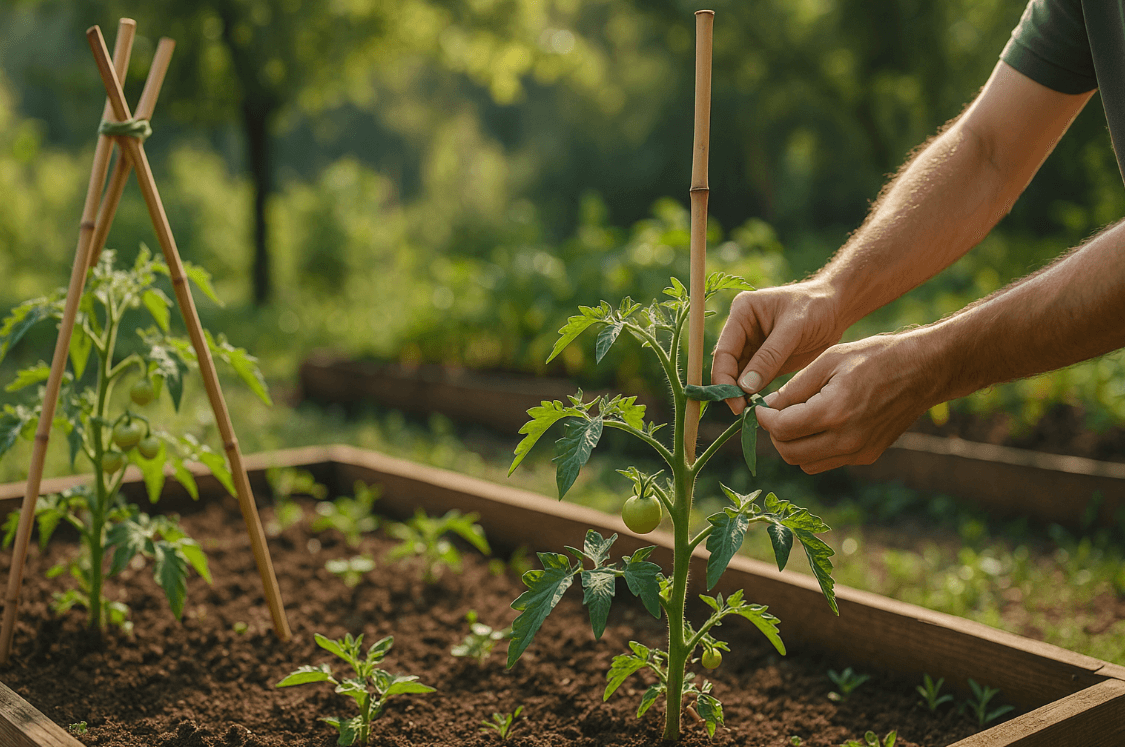Are Bamboo Stakes in Garden Worth It? Pros, Cons & Tips
Last spring on a windy test plot, I swapped our usual steel rods for bamboo and watched two crew members finish staking tomatoes an hour earlier than normal—lighter bundles, fewer sore backs. That win made me dig deeper: are bamboo stakes in garden projects really worth it when you account for rot, breakage, and bulk logistics? This article answers that with data, field lessons, and a quick sizing checklist.
As a factory-direct wholesaler, Wellco Wholesale supplies bulk bamboo stakes plus a broad mix of garden, farm, hotel, and supermarket supplies—handy if you want one PO, one pallet, and fewer vendor headaches.
Who / How / Why
Who wrote this: A composites & horticulture content specialist who consults with market growers and landscapers.
How info was gathered: Field trials, extension bulletins, supplier QC documents, and buyer interviews.
Why it exists: To help bulk buyers decide if bamboo is the right support material and source it efficiently.
What Are Bamboo Stakes in Garden Projects?
1.1 Definition & Common Applications
Bamboo stakes are straight, cured sections of bamboo culms used to support plants, build simple trellises, and mark rows. Typical uses: tomatoes, cucumbers, pole beans, peppers, young ornamentals, and even lightweight row covers.
1.2 Who Uses Them
-
Home gardeners looking for affordable, natural supports.
-
Commercial growers & landscapers who need thousands of uniform stakes each season.
-
Municipalities / schools for teaching gardens and low-cost beautification projects.
Pros and Cons: Are Bamboo Stakes in Garden Worth It?
2.1 Key Advantages
-
Renewable & biodegradable: Low embodied energy compared to metal or PVC.
-
Strong-for-weight: Tensile strength ~28,000 psi (similar to mild steel).
-
Fast to work with: Easy to cut, drill, lash; no sparks or special tools.
-
Budget-friendly: Especially in bulk for one- or two-season crops.
2.2 Drawbacks & Limits
-
Rot & moisture wicking: Constant soil contact shortens life.
-
Splitting & splinters: Uncapped ends can fray; gloves recommended.
-
Pest/mold risk: Poor storage invites insects or mildew.
-
Shorter service life: Fiberglass or galvanized steel can last 10–20 years; bamboo often 1–3 seasons.
2.3 Data Snapshot
-
Typical lifespan (untreated): 1–3 outdoor seasons.
-
Load capacity: Best for light to moderate vines; not for heavy perennial loads.
-
Cost per linear foot: Often 30–60% lower than comparable metal stakes in pallet quantities.
Choosing the Right Bamboo Stake
3.1 Diameter, Length & Wall Thickness
Quick Sizing Checklist
-
Stake height = 1.2–1.5× mature plant height
-
Windy site or indeterminate tomatoes? ≥18 mm diameter
-
Long trellises? Mix thicker uprights with thinner crosspieces
-
Ground contact? Consider capping or rotating ends each season
3.2 Treatment & Finishing
Heat-treated or flame-cured stakes shed surface moisture better. A light natural oil or clear lacquer slows rot. Rubber or tape caps on ground ends reduce splitting and water uptake.
3.3 Quantity Planning for Bulk Buyers
Expect 5–10% waste/breakage per season. Peak demand hits 6–10 weeks before transplanting—lock freight early. If you run multiple properties, consolidate SKUs to simplify reorders.
How to Use Bamboo Stakes Effectively
4.1 Placement Techniques
-
Single stake: Peppers, eggplants.
-
Teepee (tripod): Pole beans, peas.
-
A-frame: Two hinged panels for cucumbers and squash.
-
Grid trellis: Horizontal ties for espaliered flowers or nursery stock.
4.2 Securing Plants Safely
Use soft ties, Velcro, or silicone clips. Create a figure-eight loop to prevent girdling. Leave slack for stem thickening.
4.3 Crop-Specific Examples
-
Tomatoes: Tie every 8–12 in of growth; prune suckers to reduce load.
-
Cucumbers: Train early to keep vines orderly and reduce mildew.
-
Peppers: One stake + two loose ties usually prevents wind snap.
A university extension trial reported a 14% tomato yield boost when vines were tied early and evenly—organization pays.
Maintenance, Safety & End-of-Life
5.1 Cleaning, Storage & Reuse
Brush off soil, rinse, and air-dry under cover. Stack horizontally with spacers for airflow. Properly dried stakes can serve multiple cycles.
5.2 Safety Considerations
Sand sharp edges, wear gloves, and inspect for cracks. Overloaded or rotten stakes can shear and damage plants—or injure workers.
5.3 Eco-Friendly Disposal or Upcycling
-
Chip for mulch or path edging.
-
Cut into row markers or craft stakes.
-
Compost small pieces; larger ones can be biochar feedstock.
Cost & Performance Case Study (E-E-A-T Element)
6.1 Scenario
A 12-acre organic veggie farm swapped 6 ft steel rods for 6 ft bamboo to cut costs and reduce handling weight for crew members.
6.2 Numbers (One Season)
-
Material cost drop: 38%
-
Install time reduction: 22% (lighter bundles, faster carry & set)
-
Breakage rate: 9% bamboo vs. 3% steel (acceptable given savings)
-
Net savings: ≈ $210 per acre after labor + replacement factors
6.3 Lessons & Expert Quote
“Handling weight matters as much as price. We finished staking a day earlier,” the farm manager noted. They’ll keep bamboo for annual crops but stick with steel on long-term berry rows and wind-prone trellises.
When Bamboo Isn’t the Best Choice
7.1 High-Humidity / Long-Term Installs
Greenhouses with constant misting or coastal sites accelerate rot. Fiberglass stakes (20+ year lifespan) or PVC-coated steel excel here.
7.2 Heavy Loads & Permanent Structures
Arbors, pergolas, espaliered fruit trees need rigid materials. Consider hybrid systems—steel uprights with bamboo crosspieces for cost balance.
Buying Bamboo Stakes Smartly (Company Info Module)
8.1 Why Source Wholesale
Uniform diameter, clean bundling, and palletized loads cut handling damage and inconsistencies. One shipment beats piecemeal retail orders.
8.2 Wellco Wholesale Advantage
Wellco Wholesale offers bamboo stakes plus drip tape, greenhouse clips, farm tools, hotel amenities, and supermarket fixtures—letting pro buyers mix SKUs in one container. Factory-direct pricing, customization (private labels, bundle counts), and QC support simplify scaling.
8.3 Logistics & Compliance
Request fumigation certificates, moisture tests, and clear carton labels. Wellco can prep export paperwork, barcodes, and pallet maps to meet retailer or customs requirements.
Conclusion
Bamboo stakes shine when you need an affordable, flexible, and fairly eco-friendly support for seasonal crops. Match size to load, store them dry, and be realistic about lifespan. For operations juggling many supply categories, looping in a wholesaler like Wellco Wholesale streamlines buying and freight. Run the numbers, pilot a block, then scale what truly saves labor and budget.
Frequently Asked Questions
1. How long do bamboo stakes typically last outdoors?
Most untreated stakes last 1–3 seasons. Proper drying between uses and capping ground ends can stretch that to a third year in mild climates.
2. What diameter should I pick for tall tomatoes or windy sites?
Choose ≥18 mm diameter for tall indeterminate tomatoes or exposed beds. Thicker stakes reduce snap risk and sagging.
3. Can bamboo stakes be treated to resist rot?
Yes—heat treatment plus a light oil or lacquer helps. Still, avoid constant soil saturation and rotate ends each season.
4. When should I choose fiberglass or steel instead?
Use fiberglass/steel for permanent structures, high humidity, or heavy perennial loads. They cost more upfront but last many years.
5. Does Wellco Wholesale offer custom packaging or labeling?
Yes. They can bundle to your count, add private labels/barcodes, and supply fumigation or moisture certificates for compliance.


